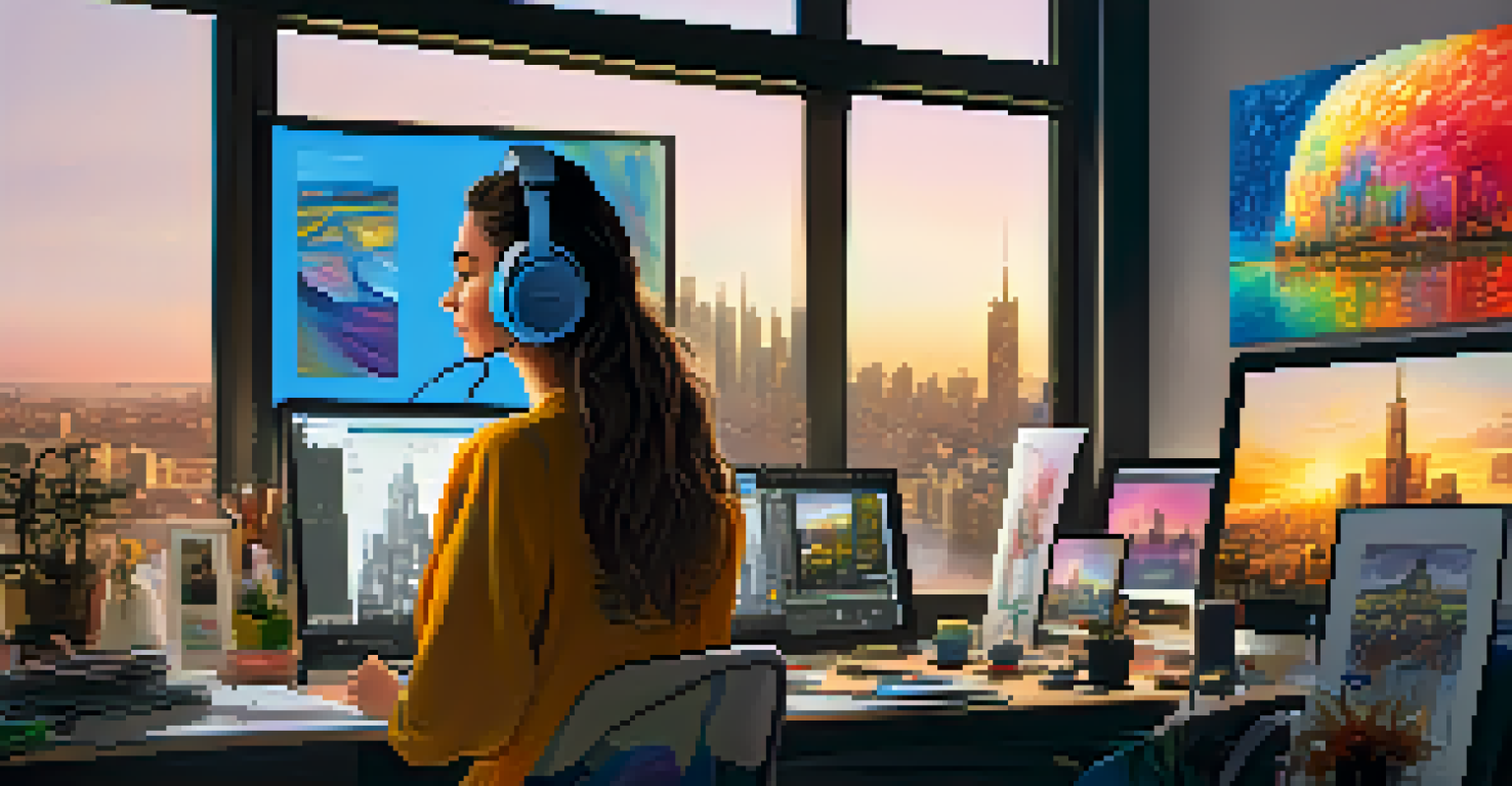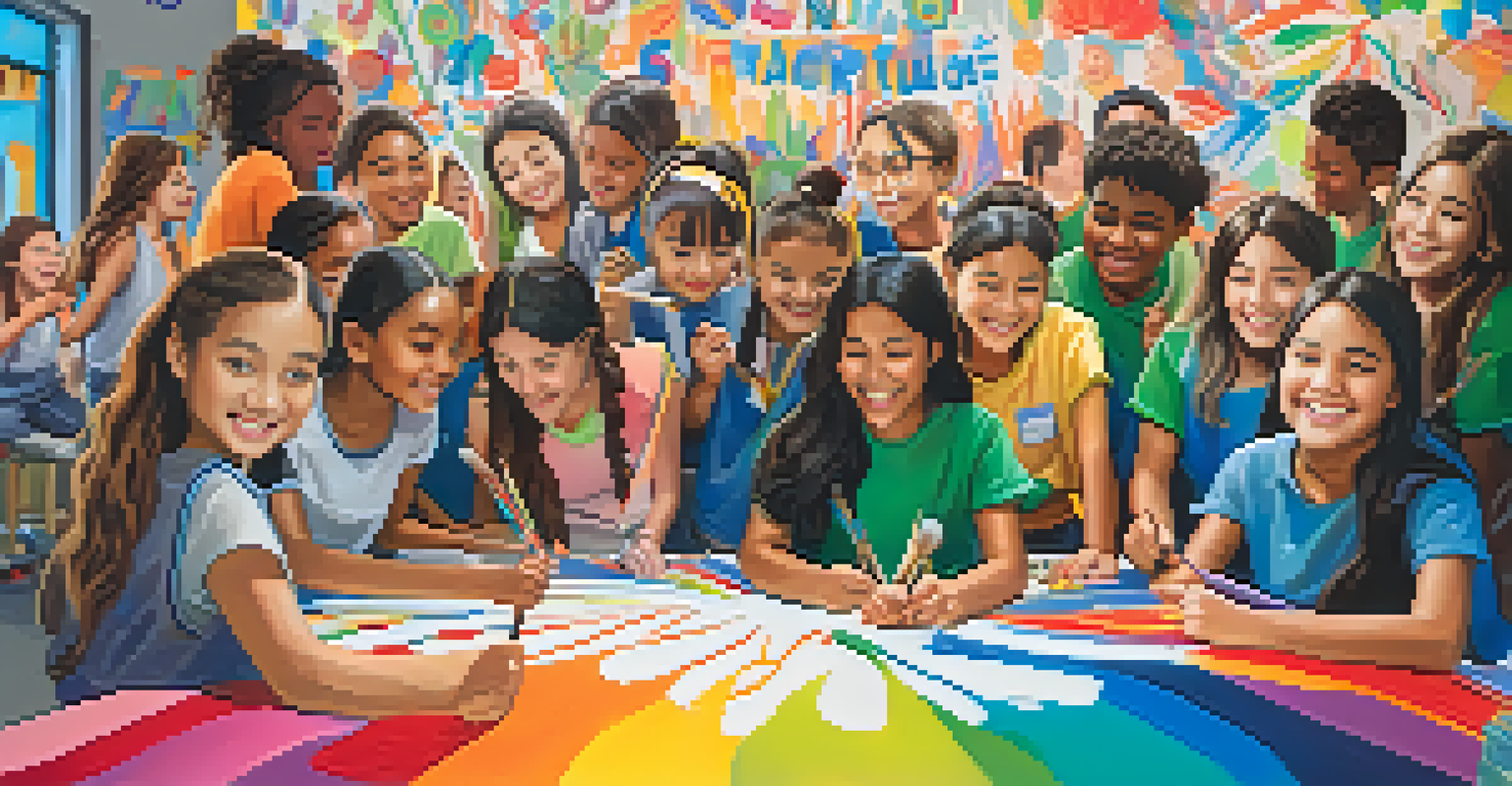Art as a Medium of Global Dialogue and Understanding

Art as a Universal Language Across Cultures
Art transcends language barriers, allowing people from diverse backgrounds to connect on a deeper level. When we look at a painting or hear a piece of music, emotions are evoked that words often fail to express. For example, Pablo Picasso's 'Guernica' communicates the horrors of war without needing a single word, showcasing the power of visual storytelling.
Art is the most beautiful of all lies.
This universal aspect of art makes it an ideal medium for fostering dialogue between cultures. It invites conversations about shared experiences and differing perspectives, creating opportunities for empathy. When we engage with art from different cultures, we often find common ground, even amidst our differences.
Art also serves as a bridge, linking generations and communities. Whether it's through traditional crafts or contemporary installations, each piece tells a story that resonates with many. This shared narrative helps to cultivate understanding, as we learn about the values and history of others through their artistic expressions.
Artistic Expression in Social Movements
Throughout history, art has played a pivotal role in social movements, acting as a voice for the voiceless. Think of the murals in the streets of Mexico City, depicting struggles and triumphs that resonate with the local community and beyond. These artworks not only inspire but also provoke thought and action, reinforcing the idea that art can drive social change.

Artists like Banksy use their platform to comment on current events, sparking conversations about issues like inequality and injustice. When people engage with these works, they’re not just observing; they’re participating in a larger dialogue that spans borders and cultures. This shared experience can mobilize communities and foster a sense of solidarity.
Art Connects Cultures Globally
Art transcends language barriers, fostering dialogue and empathy among diverse cultures.
Moreover, the visual nature of such art makes it accessible to a wide audience. It invites viewers to reflect on their realities while considering the experiences of others. This process of reflection can lead to greater awareness and understanding, ultimately contributing to a more inclusive society.
Global Art Initiatives Promoting Peace
Numerous global initiatives harness the power of art to promote peace and understanding. Programs like Art for Peace bring together artists from conflict zones to collaborate on projects that highlight their shared humanity. By creating art together, these individuals not only heal but also build relationships that transcend cultural divides.
Art is not freedom from discipline, but disciplined freedom.
These initiatives often showcase the transformative power of art in fostering reconciliation. For example, the 'One Million Bones' project invited participants to create clay bones as a visual representation of the impact of violence. This collective effort not only raised awareness but also united people in a shared mission for peace.
Such global collaborations underscore the idea that art can be a healing force. When participants share their stories and experiences through creative expression, they contribute to a narrative of hope and resilience. This shared understanding can foster a culture of peace, as communities learn to appreciate and respect each other’s differences.
Art Festivals as Platforms for Cultural Exchange
Art festivals around the world serve as vibrant platforms for cultural exchange, bringing together artists and audiences from diverse backgrounds. Events like the Venice Biennale or the Edinburgh Festival Fringe showcase a range of artistic expressions, from traditional to contemporary. These gatherings create a space where individuals can experience the richness of various cultures firsthand.
Attendees at these festivals often leave with a broadened perspective, having engaged with art that challenges their preconceptions. For instance, a theater performance from South Africa may introduce audiences to themes of resilience and struggle, sparking conversations that bridge cultural gaps. This interaction encourages mutual respect and understanding among attendees.
Art Drives Social Change
Throughout history, art has served as a powerful voice for social movements, inspiring action and awareness.
Furthermore, art festivals can also support local economies and communities, fostering pride in cultural heritage. When artists showcase their work, they not only promote their culture but also invite others to appreciate it. This reciprocal relationship enriches the global art scene, encouraging an ongoing dialogue between cultures.
Digital Art and Global Connectivity
In today’s digital age, art has taken on new forms, allowing for unprecedented global connectivity. Social media platforms have become vital spaces for artists to share their work and engage with audiences worldwide. A single post can spark conversations among people from different corners of the globe, breaking down geographical barriers.
Digital art, such as virtual exhibitions and online galleries, allows individuals to experience diverse artistic expressions from the comfort of their homes. This accessibility democratizes art, allowing more people to partake in global dialogues about culture and creativity. For example, an artist in Brazil can share their work with a follower in Japan, creating a unique exchange of ideas and inspiration.
Moreover, digital platforms can amplify underrepresented voices, showcasing art that may not have received attention in traditional galleries. This shift not only diversifies the art world but also encourages a richer, more inclusive dialogue. As we engage with these diverse perspectives, we foster a collective understanding that celebrates our shared humanity.
The Role of Art Education in Fostering Understanding
Art education plays a crucial role in nurturing a sense of global understanding among students. By introducing learners to various artistic traditions and practices, we equip them with the tools to appreciate diversity. Programs that incorporate global art history encourage students to see the value in different cultural expressions.
Through art education, students learn to interpret and critique works from around the world. This critical engagement fosters empathy and invites discussions about the social and historical contexts behind each piece. For instance, studying African art can provide insights into the continent's rich cultural heritage, prompting students to explore its significance in today's world.
Digital Platforms Expand Art Access
The rise of digital art and social media has democratized access to diverse artistic expressions, connecting audiences worldwide.
Moreover, collaborative art projects in schools can further enhance cross-cultural understanding. When students from different backgrounds come together to create, they share their perspectives and experiences, laying the groundwork for mutual respect. This hands-on approach not only nurtures creativity but also reinforces the idea that art can be a powerful medium for dialogue.
Art as a Reflection of Global Challenges
Art often reflects the pressing challenges faced by societies worldwide, providing a lens through which we can understand complex issues. From climate change to migration, artists address these topics in ways that resonate with audiences. For instance, Ai Weiwei’s installations highlight the refugee crisis, sparking conversations about human rights and dignity.
By confronting these global challenges, artists encourage viewers to engage with difficult subjects and reflect on their implications. This engagement can lead to a deeper understanding of the interconnectedness of our experiences, prompting important discussions around solutions and solidarity. Art thus becomes a catalyst for change, inspiring action and awareness.

Furthermore, art can serve as a historical record, capturing the essence of specific moments in time. By documenting struggles and triumphs, artists create a narrative that fosters dialogue about the past and present. This reflective process helps us learn from history, making art a valuable tool for understanding our global challenges.